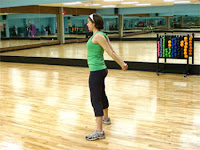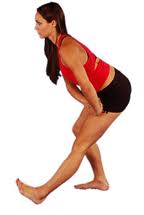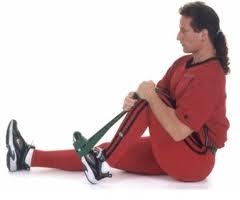For your final nine days you will increase your walk time gradually from 50 to 60 minutes and you will walk for 8bof those days. Remember to very your routine with morning walks, work-break walks, lunchtime walks, late afternoon walks and evening walks. Persuade a friend to walk with you or get the family out for a walk. You are also going to think this week about the best speed to walk at for cardiovascular health (how to build a strong heart and lungs).
Day 30 – congratulations, you’ve made it! You should feel proud of yourself. you have more energy and you should want to continue walking for the rest of your life. In future, if you put on a few extra pounds you will be able to just walk them away.
Target Heart Rate- Is It necessary?
What has all this to do with weight loss? Well , it’s true that walking will burn away the calories however fast you walk, but generally speaking a brisk aerobic walk between 3.5 to 4.0 mph will burn more calories, more quickly and more efficiently. The key thing is getting into a rhythm- your rhythm, one that works for you.
And remember, no matter how you measure it, when you walk aerobically, you are not only getting weight loss benefits, but also cardiovascular benefits (stronger heart and lungs) and benefits to your fitness and long term health.
Walking can be aerobic, even without checking your pulse and measuring target heart rate. However, this simple tech-nique ensures that you are walking within your aerobic ‘heart training zone’ and it is simple and safe.
You need to walk intensely enough to raise your heart beat between 60 per cent and 80 per cent of its maximum. (for the very unfit 50 per cent to 60 per cent is an adequate goal.)Work out your ideal pulse rate (called target heart rate) this way:
1. Subtract your age from 220. If you are 40 then that will be 220-40=180. That’s your maximum heart rate.
2. Now calculate 60 per cent and 80 per cent of your maximum heart rate: 180*60=108and 180*.80=144. Your goal when walking is to keep your pulse between 108 and 144 beats per minute. Get into a good walking rhythm, say for five minutes or so, then check your pulse at the carotid artery in your neck, or at writs. Look-ing at your watch’s second hand count the for 6 seconds then multiply by 10-that’s your pulse.
YOUR TARGET HEART RATE
| AGE | MAXIMUM
HEART RATE | 60% LEVEL | 80% LEVEL |
| 20 25 30 35 40 45 50 55 60 65 70 | 200 195 190 185 180 175 170 165 160 155 150 | 120 117 114 111 108 105 102 99 96 93 90 | 160 156 152 148 144 140 136 132 128 124 120 |
If you are below the lower end of your target range, then speed up a bit to bring yourself within it. If you are above the higher end of your target range, then slow down until you are back within your target zone. If you find measuring your pulse on the move difficult, then measure it immediately you end your work out and adjust your effort next time out. You can use this simple table to work out your upper and lower target limits.
Don’t let pulse taking take the fun out of your walking. Once you become experienced, you will be able to keep within your target zone simply by knowing how it ‘feels’. One way to know how it ‘feels’ or how you ‘perceive’ it, is to use the following Rating of Perceived Exertion, or RPE:
| RPE: Rating of Perceived Exertion
|
| Maximum Exertion 20 Extermely Hard 19 18 Very Hard 17 16 Hard 15 14 Somewhat Hard 13 12 Light 11 10 Very Light 9 8 Extermely Light 7 None 6 |
The RPE relies more on your feeling, or gut sense, of how hard you are exercising. It works on the assumption that if you think you are getting a hard workout, then you probably are, and your heart rate is likely to be in the aerobic target zone.
The RPE runs from 6 to 20. Each number represents a phase that describes your perception of how hard you are exercising. Six, for example, means ‘no exertion’; 20 means ‘maximum exertion’. By adding a zero to each number, you get a rough represents a workout which is ‘somewhat hard’ in the target heart range of 120-130.
The RPE is a rough guide only and converting it to heart rate older is difficult for older people and for those out of condition. For older people, the maximum heart rate is much lower, and for those out of condition, even moderate exercise can set their heart racing. But studies show that the REP scale repre-sents a close relationship between a person’s perceived ecer-tion during exercise and heart rate.
Instead of using target heart rate or RPE, an easy guide to effectiveness is to walk at a speed which will leave you slightly breathless but still able to carry on a conversation. For most people this will be a speed between 3.5 mph and 4 mph. This should be sufficient to achieve an aerobic workout and develop a healthy heart.







